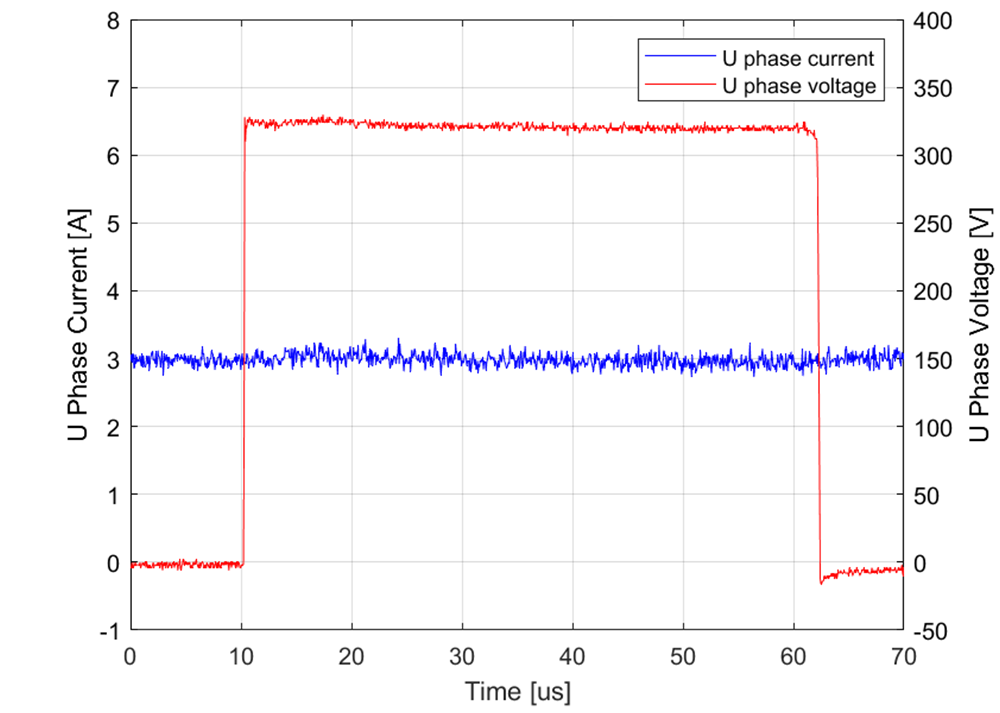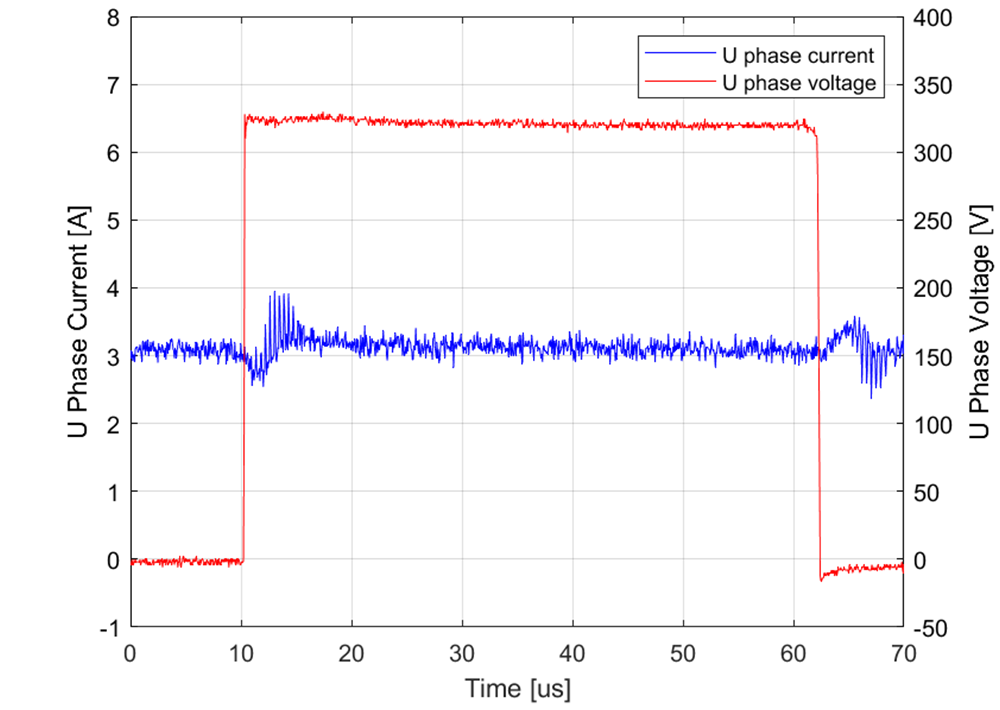TIDUF65 March 2024
- 1
- Description
- Resources
- Features
- Applications
- 6
- 1System Description
- 2System Overview
- 3System Design Theory
- 4Hardware, Software, Testing Requirements, and Test Results
- 5Performance Comparison with Competitor’s Device
- 6Design and Documentation Support
- 7About the Author
5.3 PWM Rejection
For the PWM rejection test details, see Section 4.4.3. The output voltage of the current sensor during one PWM cycle is recorded by continuously increasing the ADC sampling point position. The test results are shown in Figure 5-3 and Figure 5-4.
 Figure 5-3 PWM Rejection Test
(TMCS1123B1)
Figure 5-3 PWM Rejection Test
(TMCS1123B1) Figure 5-4 PWM Rejection Test
(Competitor’s Device)
Figure 5-4 PWM Rejection Test
(Competitor’s Device)During the switching, the competitor’s device outputs large spike noise which is up to 1A if converted to equivalent input current, while TMCS1123 shows great immunity to the common-mode transient. Higher CMTI provides an accurate sampling result especially in a small duty cycle.